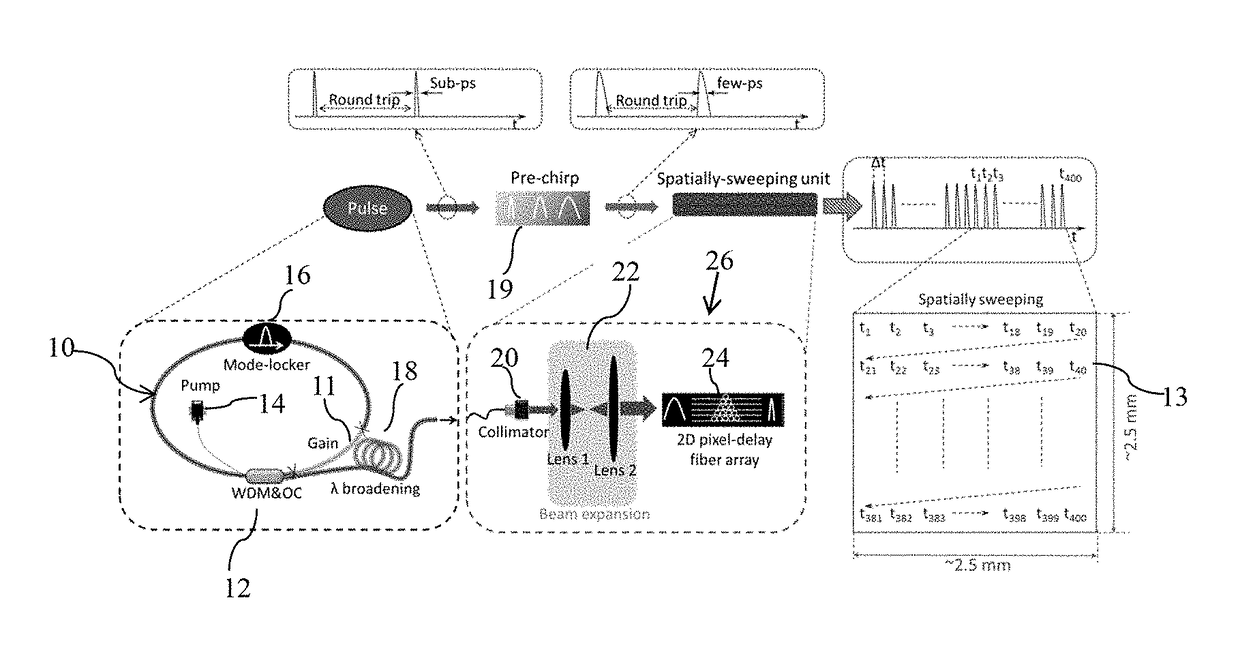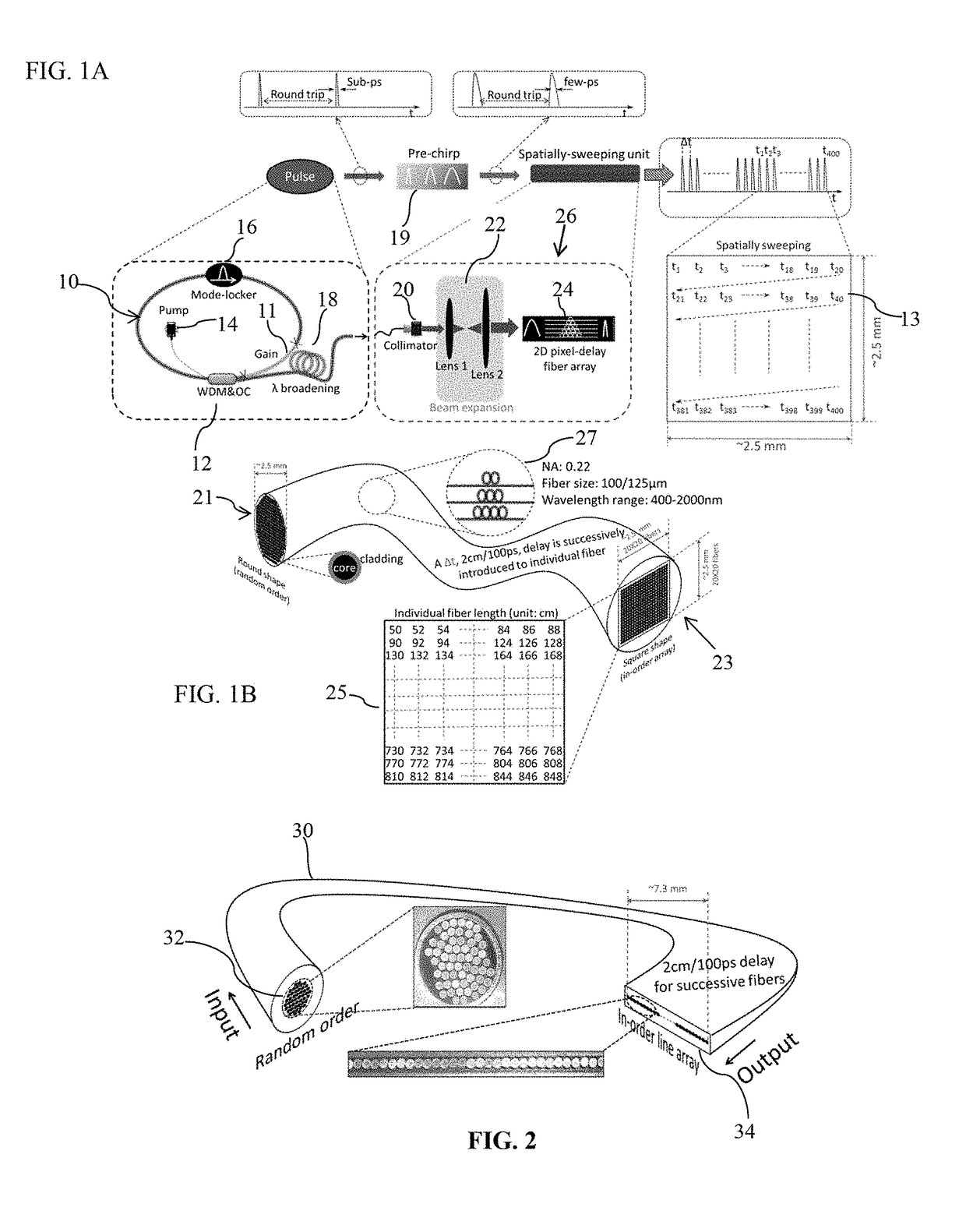Spatio-temporally incremental fiber swept source
a fiber swept source and spatial-temporary technology, applied in the field of optical fiber sources, can solve the problems of blurred images, largely limited image processing speed, and achieve the effect of fast image capture and boost the frame rate of 2d imaging
- Summary
- Abstract
- Description
- Claims
- Application Information
AI Technical Summary
Benefits of technology
Problems solved by technology
Method used
Image
Examples
Embodiment Construction
[0021]The spatio-temporally incremental fiber swept source (STIFSS) of the present invention provides an ultrafast inertia-free spatially-scanning laser pulse for each frame of imaging. The sub-ps pulse train is linearly mapped into a 2D spatial distribution by a differential time delay in the fibers of a fiber array as shown in FIG. 1B. Each spatial pixel offers a sub-ps dwell time. This completely-new laser source can be directly applied to existing optical imaging systems and it can perform 2D imaging at a frame rate of 10s MHz, which is several orders of magnitude faster than that of mechanical raster scanning systems, which typically operate in the range of kHz.
[0022]As shown in FIG. 1A the STIFSS can be divided into three parts: 1) high power ultra-short pulse generation (ultrafast femtosecond (fs) pulse generation) with wavelength window management, 2) pulse pre-chirp and 3) ultrafast spatial sweeping. For the high power ultrashort pulse generation, a simple fiber ring cavity...
PUM
 Login to View More
Login to View More Abstract
Description
Claims
Application Information
 Login to View More
Login to View More - R&D
- Intellectual Property
- Life Sciences
- Materials
- Tech Scout
- Unparalleled Data Quality
- Higher Quality Content
- 60% Fewer Hallucinations
Browse by: Latest US Patents, China's latest patents, Technical Efficacy Thesaurus, Application Domain, Technology Topic, Popular Technical Reports.
© 2025 PatSnap. All rights reserved.Legal|Privacy policy|Modern Slavery Act Transparency Statement|Sitemap|About US| Contact US: help@patsnap.com



